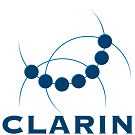Lexica
DiaMaNT
With DiaMaNT (Diachroon seMAntisch lexicon van de Nederlandse Taal), the Dutch Language Institute is building a computational semantic lexicon that offers diachronic semantic information. It forms a semantic layer on top of GiGaNT (a computational lexicon of the Dutch language from the sixth century until now), by providing information about word meanings. DiaMaNT interrelates word forms with semantic units (concepts) and places them in time. The lexicon is a subproject of CLARIAH (Common Lab Research Infrastructure for the Arts and Humanities), a collaborative project set up to provide a digital infrastructure for the Arts and Humanities.
GiGaNT
At the moment the Dutch Language Institute (INT) is developing a computational lexicon of the Dutch language from the sixth century up to the present. This lexicon, called GiGaNT, will be a collection of words and word groups, including named entities (names of persons, places, organisations), showing every possible variant of spelling and form.
NT2Lex
NT2Lex is a lexical database for Dutch as a foreign language (NT2) that includes frequency distributions of words observed in texts graded along the six-level scale of the Common European Framework of Reference for Languages. Available for online search and for download.
WebCelex
WebCelex is a webbased interface to the CELEX lexical databases of English, Dutch and German.
CELEX was developed as a joint enterprise of the University of Nijmegen, the Institute for Dutch Lexicology in Leiden, the Max Planck Institute for Psycholinguistics in Nijmegen, and the Institute for Perception Research in Eindhoven. For each language, the database contains detailed information on: orthography (variations in spelling, hyphenation), phonology (phonetic transcriptions, variations in pronunciation, syllable structure, primary stress), morphology (derivational and compositional structure, inflectional paradigms), syntax (word class, word class-specific subcategorizations, argument structures) and word frequency (summed word and lemma counts, based on recent and representative text corpora).
